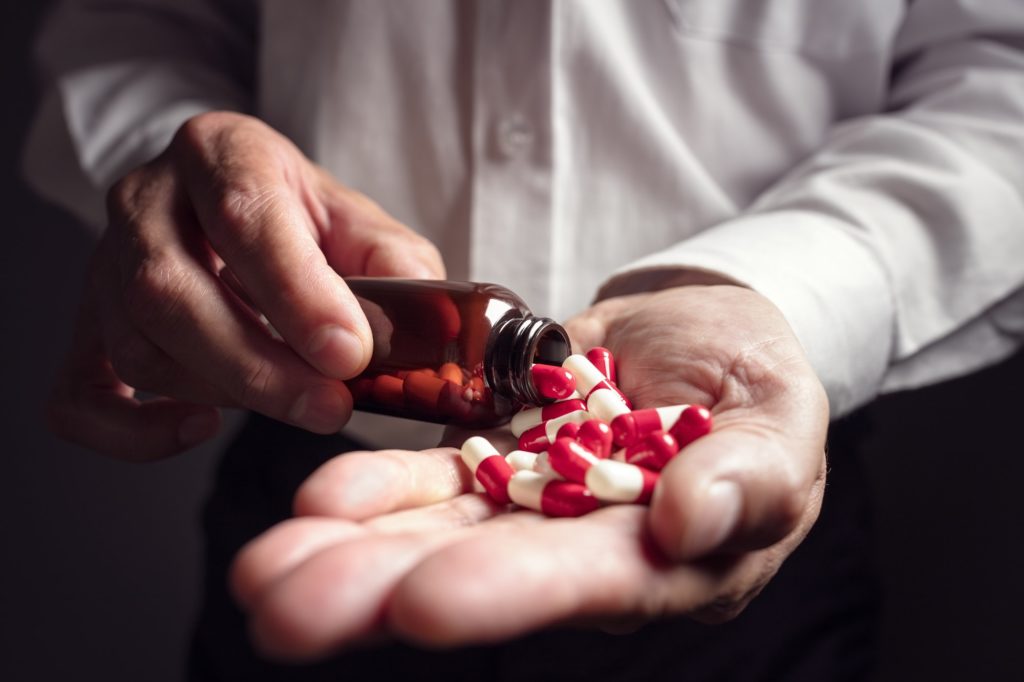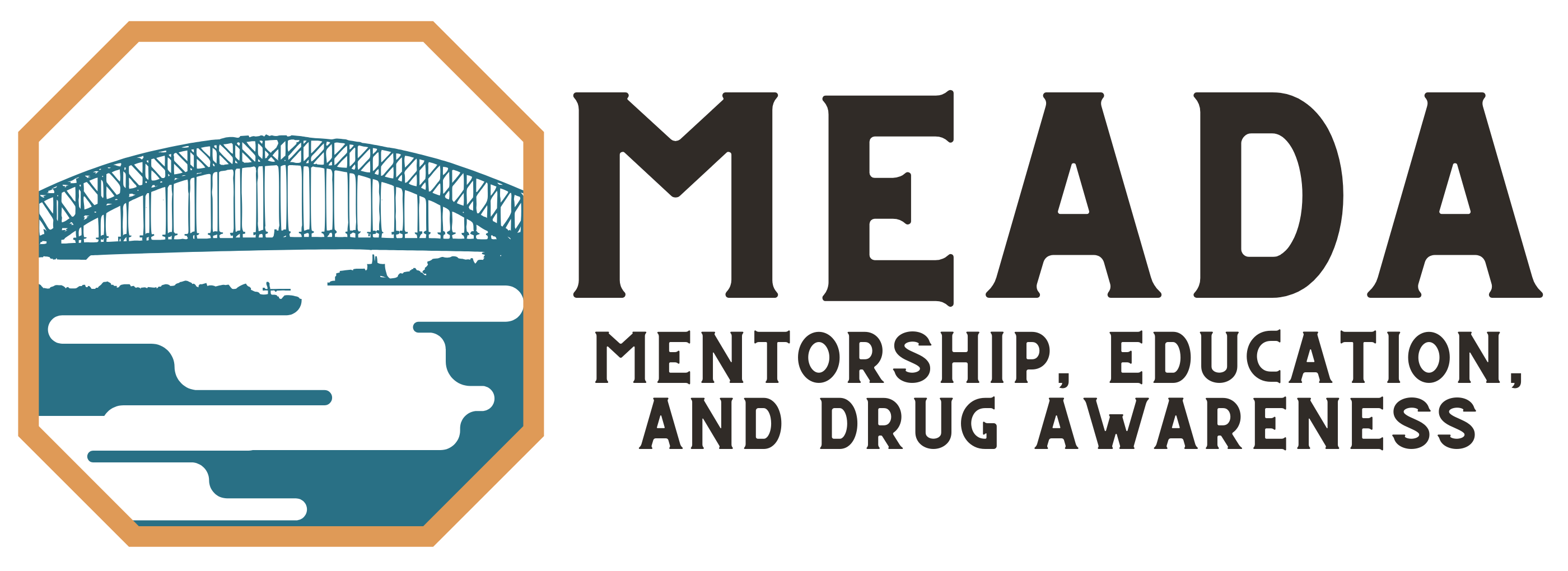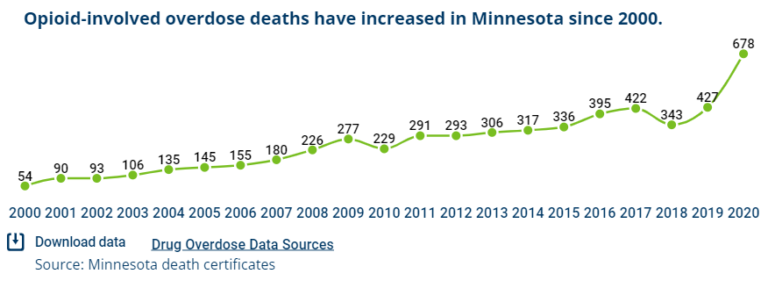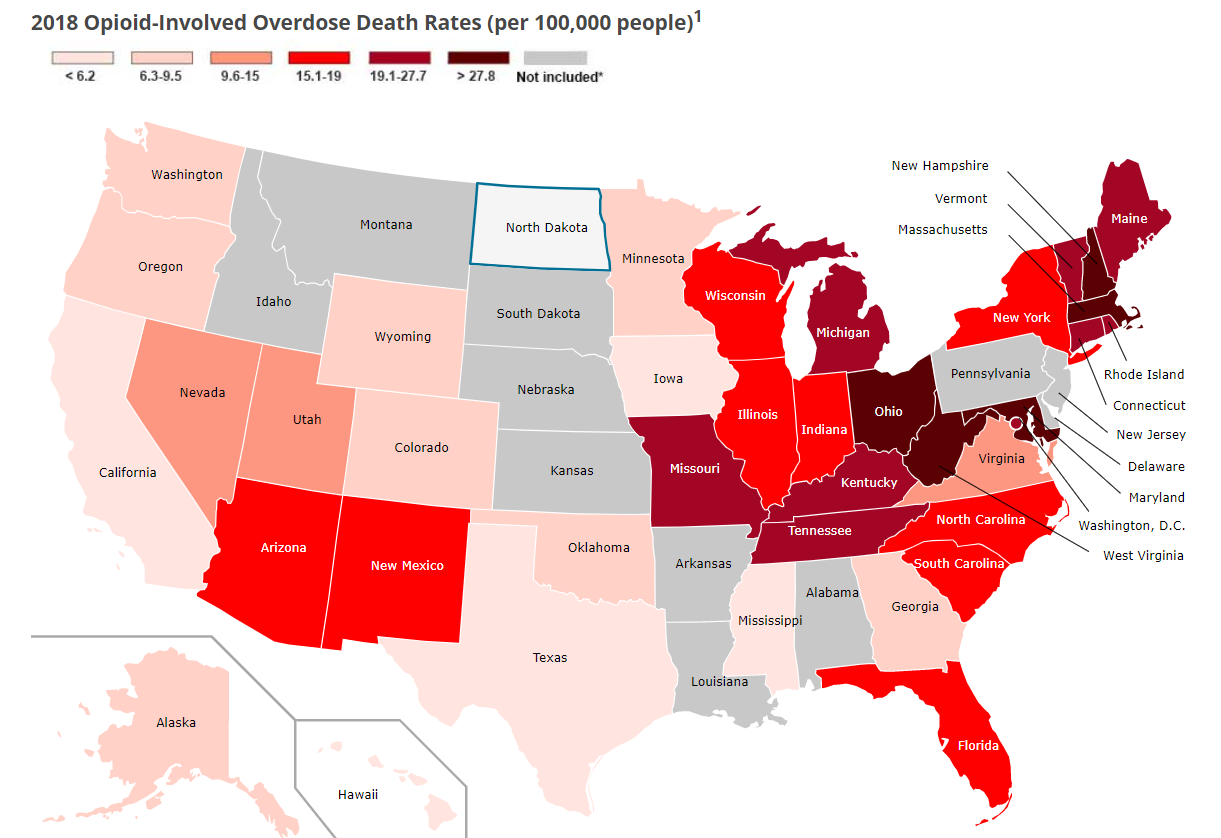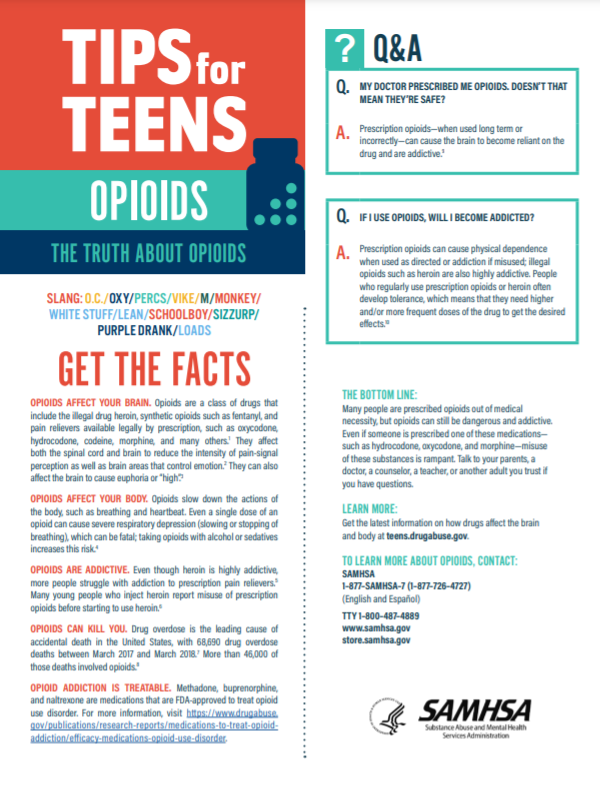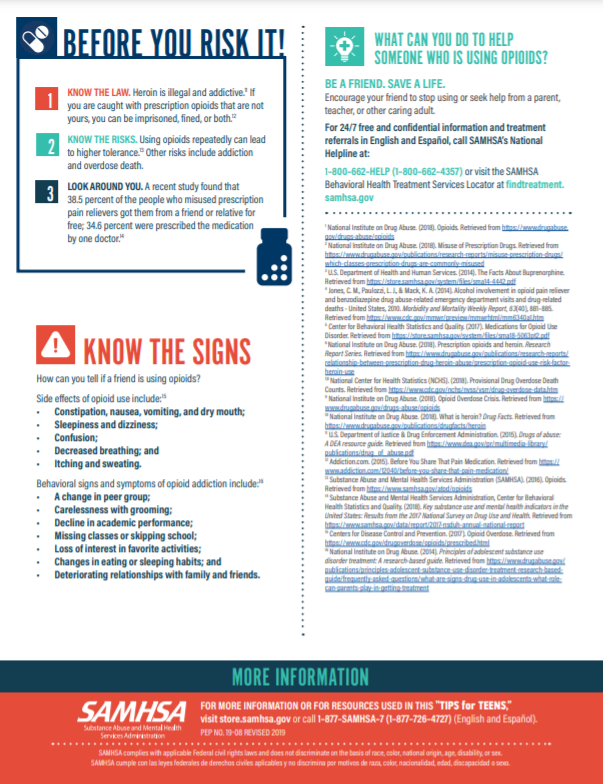PRESCRIPTION DRUGS
Misuse of prescription drugs means taking one’s own medication in a manner or dose other than prescribed; taking someone else’s prescription, even if for a legitimate medical complaint such as pain; or taking a medication to feel euphoria (i.e., to get high). The three classes of medication most commonly misused are:
- Opioids — usually prescribed to treat pain
- Sedatives — used to treat anxiety and sleep disorders
- Stimulants — most often prescribed to treat attention-deficit hyperactivity disorder (ADHD)
Opioids are prescribed to treat pain and can also reduce tension, anxiety, and aggression. They come in tablets and capsules, skin patches, and liquid form.
Commonly Prescribed Opioids:
- Codeine
- Hydrocodone
- Morphine
- Oxycodone
- Fentanyl
- Heroin is also an opioid but is illegal to prescribe in the United States.
Common Drug Names
Aunti Emm, Big O, midnight oil, Mira, Pen Yan, God’s Medicine, Chinese molasses, Chinese tobacco
Health Impacts
Beyond pain relief, opioids can cause slowed physical activity, pupil constriction, constipation, nausea and vomiting, slowed breathing, loss of coordination, and slurred speech.
Just because an opioid is being obtained and used legally does not mean a person cannot become addicted to them. Dependence on the drug results in confusion, episodes of violence, needing it regularly to function, neglecting to eat, and a lack of interest in self, family, friends, or hobbies.
Opioid overdoses can be identified by what is referred to as the “opioid overdoes triad”: pinpoint pupils, unconsciousness, and abnormally slow breathing. This can result in paralysis or death. Naloxone (brand name Narcan), available as an injection or nasal spray, can treat a narcotic overdose in an emergency. Naloxone is an opioid antagonist—meaning that it binds to opioid receptors and can reverse and block the effects of other opioids. It can quickly restore normal breathing to a person who overdosed. Emergency medical services should be called as soon as naloxone is given.
Withdrawal
Withdrawal symptoms initially include agitation, anxiety, muscle aches, increased tearing, insomnia, runny nose, sweating, and yawning. Late withdrawal symptoms include abdominal cramping, diarrhea, dilated pupils, goose bumps, and nausea and vomiting.
Treatment Methods
Medication-assisted therapy (MAT) is central to helping treat opioid use disorder (OUD). Three medications are FDA-approved to treat OUD: methadone, buprenorphine, and naltrexone. MAT, combined with counseling and recovery work, can help individuals achieve lasting recovery.
Sedatives suppress activity in the central nervous system. There are two major types: barbiturates and benzodiazepines. Barbiturates are prescribed for acute anxiety, tension, and sleep disorders. Benzodiazepines are prescribed for anxiety, acute stress reactions, and panic attacks.
Common Drug Names
Bennies, benzos, downers, sleeping pills, purple footballs, candy
Health Impacts
The short-term effects of sedatives include poor concentration, confusion, dizziness, impaired movement, memory loss, drowsiness, slurred speech, low blood pressure, slowed breathing, nausea, clumsiness, and a slowed heartbeat. In the long-term, sedative use can result in addiction and seizures.
Withdrawal
Those who chronically abuse sedatives are at risk for withdrawal that looks identical to alcohol withdrawal. Common symptoms include trembling, hallucinations, insomnia, and anxiety.
Treatment Methods
After treating the symptoms of withdrawal, sedative addiction is most commonly done treated through counseling including motivational interviewing techniques, cognitive-behavioral therapy, and relapse prevention methods. This helps identifies triggers and coping mechanisms alternative to sedative use.
Stimulants excite the central nervous system through the brain chemicals dopamine and norepinephrine, increasing alertness, energy, and attention and elevating blood pressure, heart rate, and respiration rate. Prescribed most often for ADHD, proper use of this drug is to calm individuals and help them focus, dramatically improving their ability to stay organized and on task. Stimulants are also used to treat narcolepsy.
Common Drug Names
Speed, uppers, vitamin R, cat, crank, flake, pellets, r-ball, skippy, snow
Health Impacts
The undesirable, initial effects of stimulants include trembling, sensitivity to touch, raised body temperature, and loss of appetite. Effects on the brain include anxiety, depression, exhilaration, inability to sleep, and irritability. In the long-term, effects include dizziness, tremors, headache, excessive sweating, and vomiting. They can also cause agitation, hostility, panic, aggression, paranoia, hallucinations, and extreme fatigue, and stimulants can increase suicidal and homicidal tendencies.
Overdosing on stimulants can result in high fever, seizures, cardiovascular collapse, and death. In the event of an overdose, emergency medical services should be called. Thy will try to mitigate the effects of the overdose by restoring blood flow to the heart and stopping seizures.
Withdrawal
When individuals have been abusing stimulants for long periods of time, they will likely experience withdrawals if they stop using them. These symptoms include fatigue, depression, and disrupted sleep patterns.
Treatment Methods
Behavioral therapy can be effective in helping to treat people with a prescription stimulant addiction. This helps to end drug use by modifying though patterns and behaviors, as well as discovering ways to manage triggers and stress.
SAMHSA's National Helpline - 1-800-662-HELP (4357)
SAMHSA’s National Helpline is a free, confidential, 24/7, 365-day-a-year treatment referral and information service (in English and Spanish) for individuals and families facing mental and/or substance use disorders.
SAMHSA's Behavioral Health Treatment Services Locator
Narcotics Anonymous
Narcotics Anonymous offers recovery from the effects of addiction through working a twelve-step program, including regular attendance at group meetings. The group atmosphere provides help from peers and offers an ongoing support network for addicts who wish to pursue and maintain a drug-free lifestyle. Find an NA meeting near you.
National Institute on Drug Abuse: Treating Prescription Drug Addiction
For Providers: Minnesota Alliance of Rural Addiction Treatment Programs
DRUG TRENDS
Misuse of prescription opioids, sedatives, and stimulants is a serious public health problem in the United States. The reasons for the high rate of prescription drug misuse varies for different demographic groups but is very attributable to how easy it is to access these drugs.
